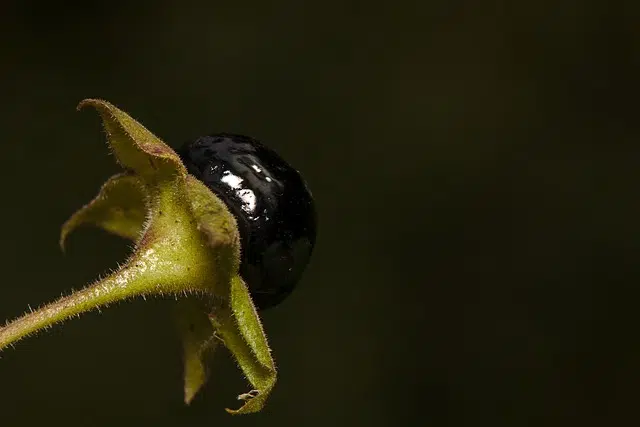
Belladonna is a highly toxic plant.
The term belladonna comes from the Italian word belladonna . According to the dictionary of the Royal Spanish Academy ( RAE ), the concept refers to a highly toxic plant .
Scientifically named Atropa belladonna , nightshade belongs to the Solanaceae family group. Like the rest of the species in this group, it is an angiosperm with two cotyledons whose berry contains multiple pulpy albumen seeds.
Belladonna characteristics
Angiosperms such as nightshade are phanerogamous (their reproductive organs take the shape of a flower and can be seen) with carpels that develop an ovary, inside which the ovules are housed. On the other hand, by having two cotyledons (the first leaf of the embryo is called cotyledon), it is classified as dicotyledonous .
Belladonna is a perennial plant . This means that it is able to survive for two or more years. It usually develops as a shrub , reaching a height of about 1.5 meters.
Woody in the base area, the stems of this vegetable grow with branches. Oval-looking leaves and bell-shaped flowers are other features of nightshade.

Belladonna poisoning usually occurs from ingesting the berries.
a poisonous plant
The various parts of belladonna, from the roots to the berries, seeds and leaves, contain toxic tropane-type alkaloids . It is important to mention that poisoning can be lethal for humans .
Hyoscine , hyoscyamine and atropine are among the tropane alkaloids present in specimens. Although ingesting certain amounts of belladonna can cause great harm or even death , controlled administration allows the treatment of various disorders.
Belladonna poisoning
Although poisoning is rare, there have been cases mainly of children ingesting the berries . Although each individual's reaction is different, consumption of four berries is estimated to be potentially fatal.
Ingestion causes dryness of the mucous membranes, muscle weakness and an increase in heart rate. In more severe cases, the person may suffer from delusions and hallucinations and have seizures.
In case of poisoning, physostigmine is usually used as an antidote . Activated charcoal can also be used to perform a stomach lavage.
Use in medicine
As we already indicated above, a controlled dose of belladonna can have positive health effects. Pneumonology , gastroenterology and ophthalmology are medical specialties that take advantage of this plant.
Parkinson's disease , bronchial spasms , and ulcerative colitis are among the health problems that can be treated with belladonna. Of course, a doctor is the one who must indicate when and how drugs derived from the plant should be used.
Another plant called belladonna
In regions of Mexico , Kalanchoe blossfeldiana is called nightshade. This succulent plant with fleshy leaves and four-petaled flowers is used in gardening .
Belladonna of this type is native to the island of Madagascar . It is even endemic to said island territory, which means that it does not grow naturally in other regions.
rock bands
It is interesting to mention, finally, that different rock bands have been baptized as Belladona . In Argentina , it is the name of a group that was formed in 2001 , the year in which they released their debut album ( "Hasta los bones" ).
In Spain , meanwhile, Belladona was a group led by Aurora Beltrán in the 1980s . The group went on to record the album “Las mujeres y los negroes Primero” before breaking up.
